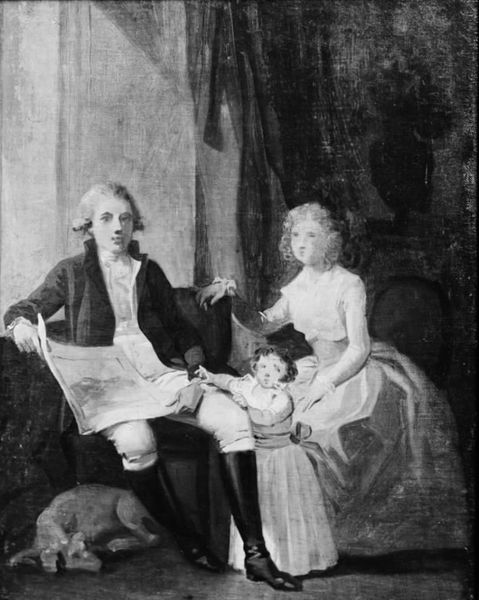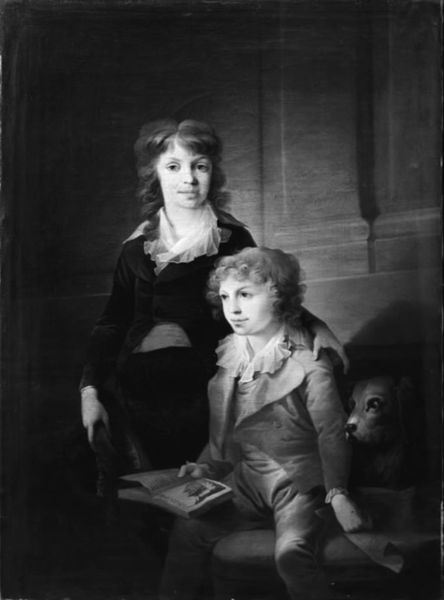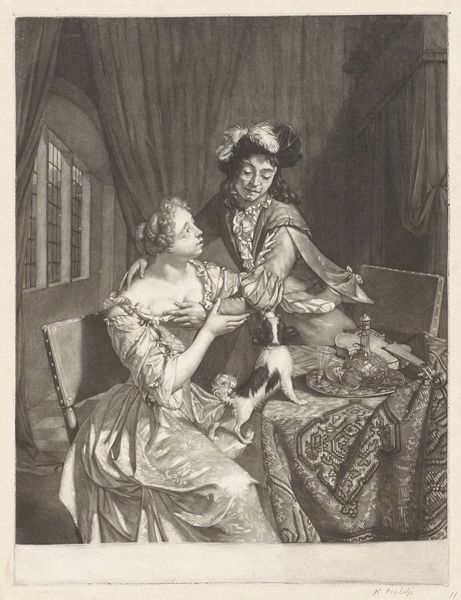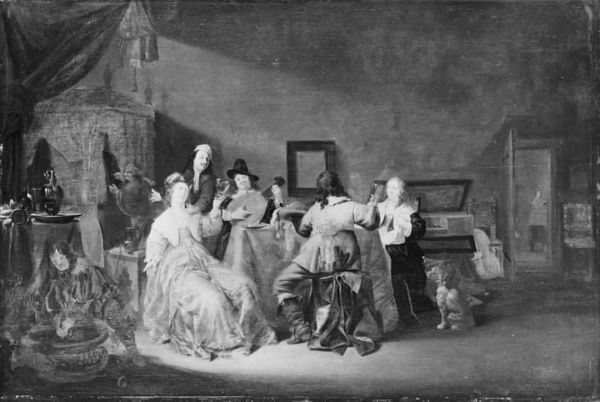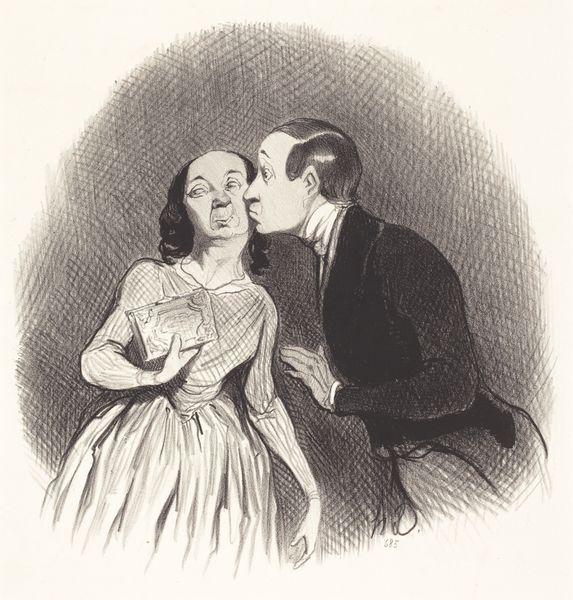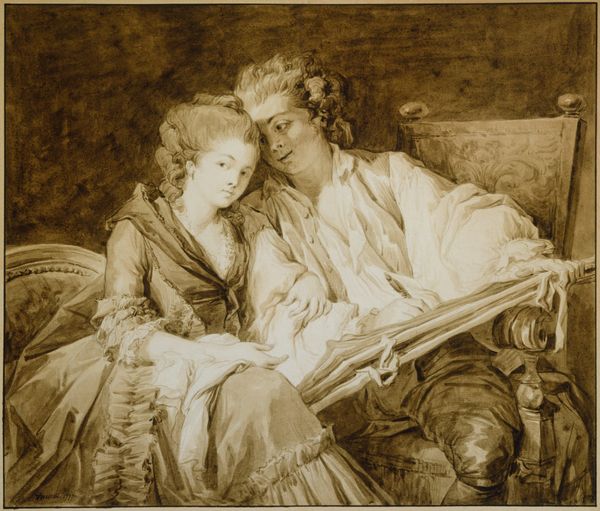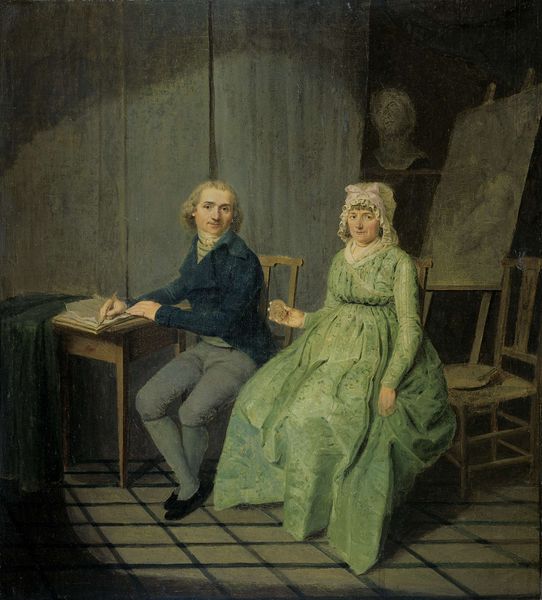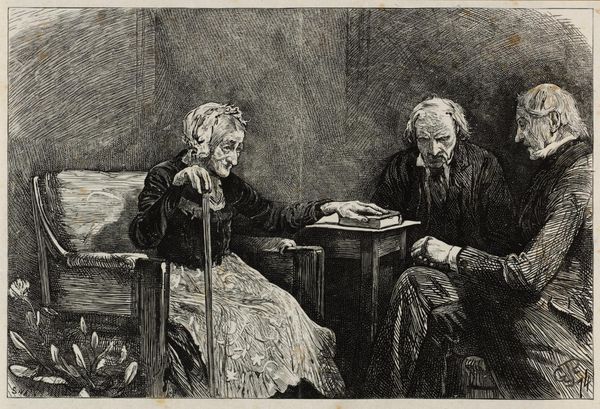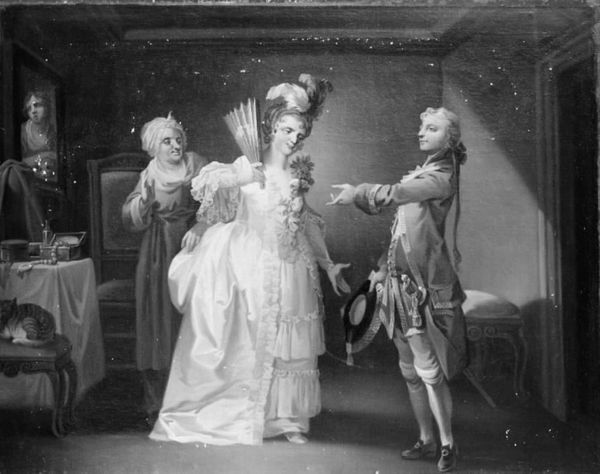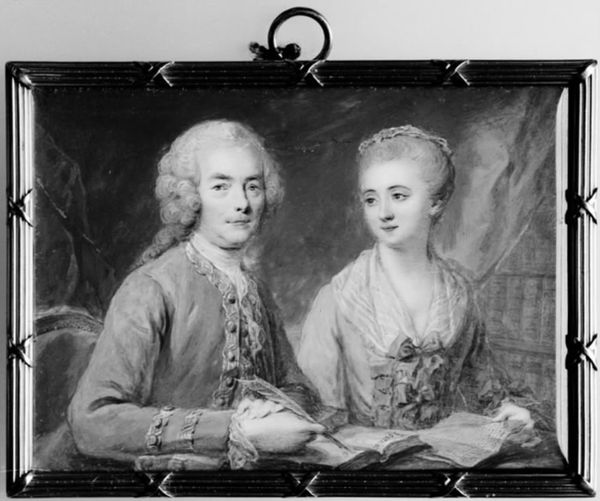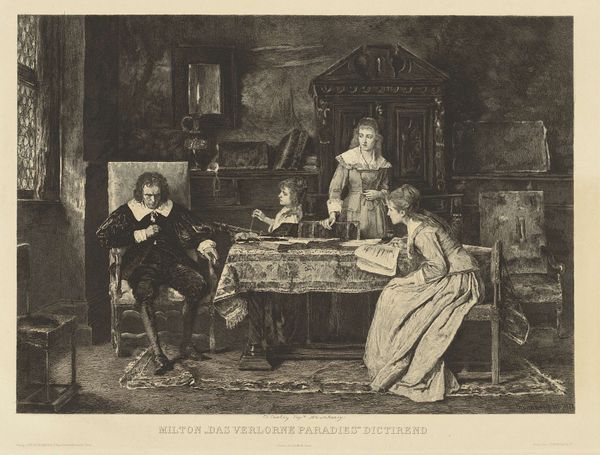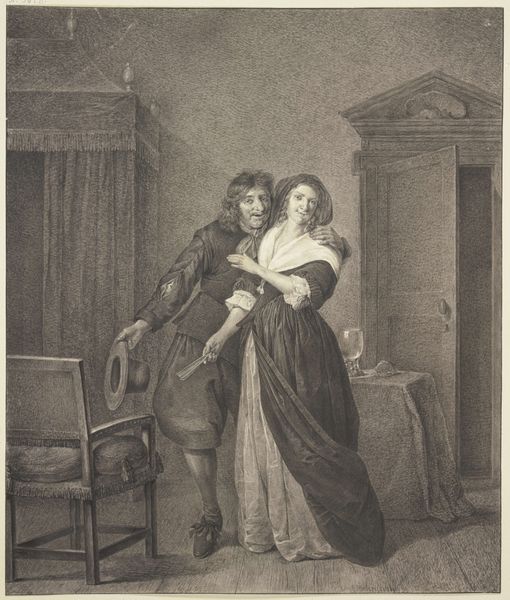
oil-paint
#
conversation-piece
#
neoclacissism
#
black and white photography
#
oil-paint
#
intimism
#
black and white
#
monochrome photography
#
genre-painting
#
history-painting
#
monochrome
#
monochrome
Dimensions: 42.5 cm (height) x 35.5 cm (width) (Netto)
Curator: Erik Pauelsen's oil on canvas, "Frieren," created in 1784, presents an intimate scene. Its almost monochrome palette emphasizes the textures and forms depicted. I find the subjects strangely detached, though, enveloped in a kind of melancholic privacy. Editor: Detached indeed. The very air in this painting seems thick with unspoken meaning, weighted with significance. Note how the woman’s posture suggests both compliance and a sort of delicate sorrow. The string of beads, are they prayer beads, or perhaps a symbol of betrothal? They carry an enormous symbolic load. Curator: Absolutely, there's so much suggested about social rituals of the late 18th century. Look at the composition – the gentleman leans attentively toward her, but the space between them is palpable. This hints, I think, at the carefully constructed gender roles prevalent at the time. The making of the work also points to a society increasingly defined by leisure and a culture of consumption that supported artistic production for a wealthy class. Oil paint as a medium itself speaks of that. Editor: I agree completely. It’s as if we're witnessing a pivotal moment within a codified performance. The woman gazes downward at what she holds, but perhaps more significantly, away from direct confrontation or engagement with the man’s expectations. The weight of societal expectation, especially on women during this era, is almost unbearable as shown through such simple composition and carefully posed figures. Curator: Furthermore, considering its materiality, the creation of "Frieren" demanded a certain level of resources. From the cost of pigments and canvas, to the commission of the artist himself – a substantial investment underlining its place within economic networks of status and taste of that moment. We might reflect on how this production, its display, and the audience's engagement with it reinforced a very specific vision of domesticity and the world in general. Editor: An excellent point. I will certainly reconsider how the materials support the artwork's deeper meaning. Still, it is striking how charged an apparently everyday image of two figures becomes through symbolism; it's not just documentation but an encapsulation of so much culturally. Curator: The subtle variations of the monochrome accentuate not just their clothing or interaction but societal complexities, class differences, and norms around courtship and communication that are at play here, reminding us of how the act of painting isn't just depiction, but participation. Editor: Exactly; thank you for opening my eyes. What a surprisingly complex work.
Comments
No comments
Be the first to comment and join the conversation on the ultimate creative platform.

